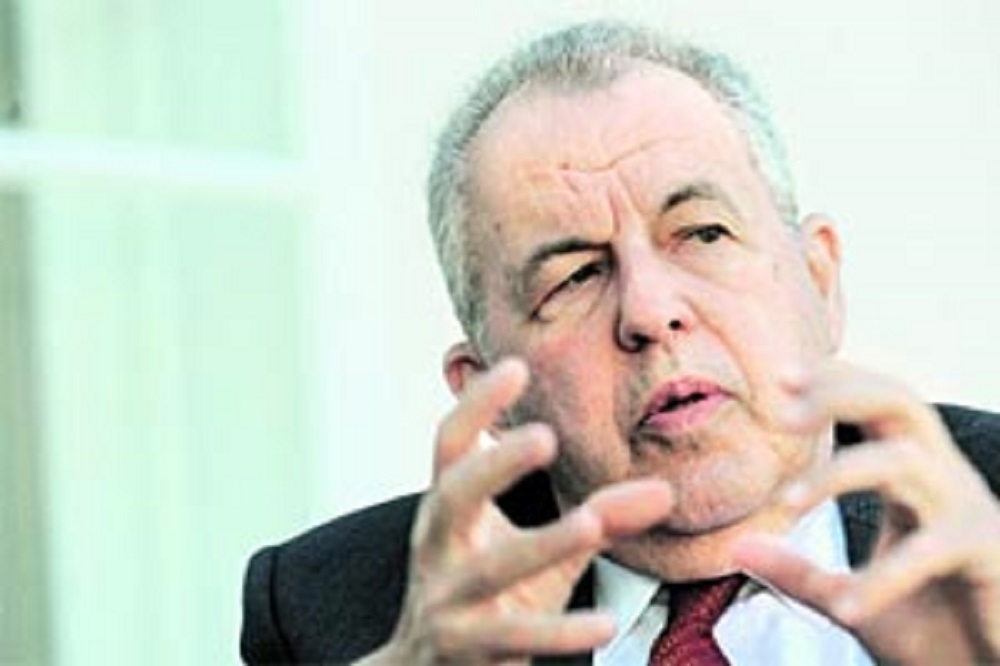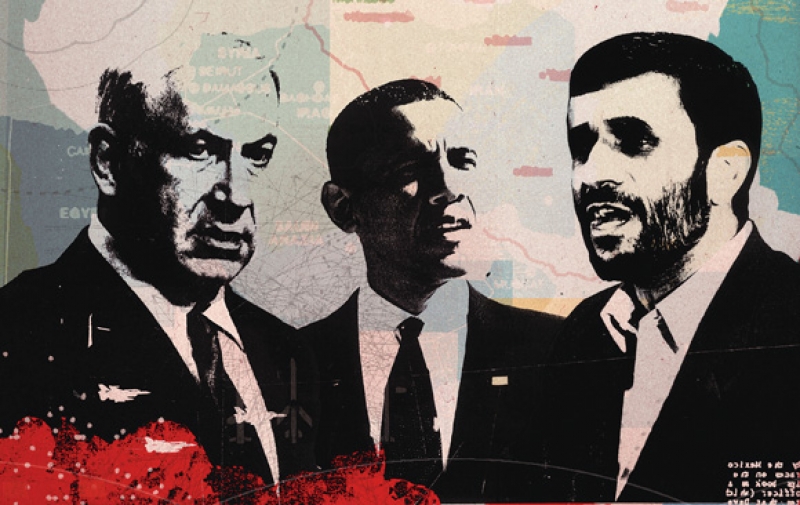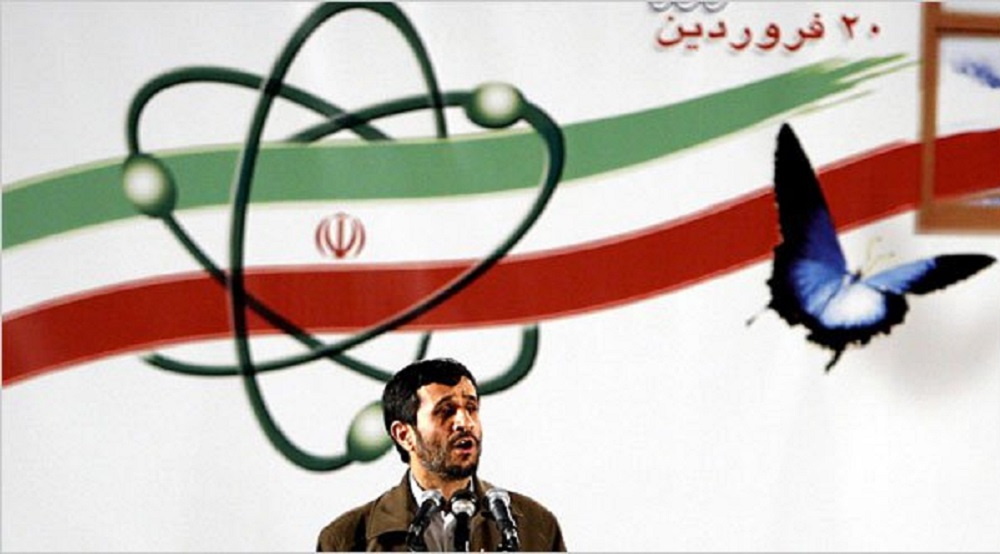Khatami & The Reformist Myth
Amid reports that Iranian President Mahmoud Ahmadinejad is purging reformist professors from Iranian universities, Mohammed Khatami, the former president of the Islamic Republic of Iran is winding his way through American cathedrals, cities and think-tanks shaking hands, giving interviews, buying more time for the Ayatollahs back home to complete their Islamic bomb and lecturing Americans on the ethics of tolerance – an interesting topic coming as it does from a former leader of one of the world’s least tolerant regimes.
There is much to this man (who claims to be a direct descendant of the Prophet Mohammed) and his time as President of the Islamic Republic of Iran that seems to have slipped below the radar screen in Foggy Bottom. The only conceivable advantage to having someone like Khatami come to our country at a time when America is mourning its losses on 9/11 is that it presents an opportunity for the U.S. media to ask him about the atrocities committed during his administration, the assassinations of Iranian political dissidents, the arrest and torture of thousands of his own people (specifically trade unionists and student leaders), the closing of hundreds of newspapers and other publications, the banning of books and films and his support for terrorist organizations. How such a man as this can be granted a visa to speak to Americans on the subjects of tolerance and ethics staggers the imagination. It is as if the events of 9/11 never occurred.
Prior to September 11, 2001 detecting moderation from Iran had become a bit of a cottage industry in American foreign policy circles, with the fashionable view being that Tehran could be wooed into joining the West and become an acceptable international citizen. [1] In 2000, Khatami sent a message to the UN that he might be willing to shake President Clinton’s hand – an act seen by many as the first overture of friendship between the two countries since the 1979 US embassy hostage taking incident. Later, when Iran did not vociferously oppose the American war in Afghanistan after 9/11 and even showed some signs of support – such as the Iranian foreign minister shaking hands with former Secretary of State Colin Powell at the UN – the idea that America could work with the mullahs became fashionable, especially amongst the diplomats of the State Department. But illusions die hard in Washington.
Mohammed Khatami was elected President of the Islamic Republic of Iran in 1997 at a time when the mullahs refused to permit two hundred and thirty-four other candidates to run on the grounds they were too reformist. Khatami, however, proved acceptable to them. Nevertheless, Columbia University professor Gary Sick called Khatami “a reformer with an outspoken commitment to civil society, social justice, the rule of law and expanded freedom” [2] and former Los Angeles Times staff writer Robin Wright labeled Khatami “the country’s leading reformer.” [3] While Khatami may have loosened some of the strictures on listening to music and other social activities, there were no substantive political changes made during his term of office. Khatami has always shared the long term goals of Ayatollah Khomeini’s radical revolution. “If I retreated”, he once said in 2004, “I retreated against the system I believed in.”
At best, Khatami was an ineffectual political figurehead. Iran’s reform movement, which at first counted him as one of their own, ended up bitterly denouncing him for his willingness to serve as a democratic facade for an oppressive regime. He lost his popular support when his own government murdered or jailed Iranian dissidents and he proved unable to make even modest reforms. Whatever reformist intentions he may have had died in 2004 when Iranians finally refused to vote any longer for candidates like Khatami who had been “pre-selected” by the Iranian Guardian Council.
If Khatami was indeed a reformist, he covered his tracks well. Iran’s nuclear program flourished during his eight years in power and his opinions have consistently been anti-American. In the aftermath of the Bam earthquake in early December 2003, in response to American offers of humanitarian aid, Khatami responded that there would be no improvement in US-Iranian relations unless and until the United States mended its “evil ways”, but before that could happen, he added, Americans would first have to “learn their lesson in Iraq.” For those without blinders, the implication was that Iran would do all in its power to ensure an American defeat.
Later, when Iran’s Supreme Leader Ayatollah Khamenei cracked down on discussions on improving American-Iranian relations and the reformists protested, Khatami remained silent. While he did call for protecting the Majlis (Iranian parliament) and individual freedoms, he also called for the protection of “the regime’s apparatuses” – the same “apparatuses” that have effectively destroyed the reform movement in Iran. True to his 1980 writings in the Iranian daily Keyhan, Khatami has never retracted his view that government was “only for the clergy”.
If the media truly wishes to do a service to America, they should raise serious questions about Khatami’s term in office. Khatami ruled over the largest repression of the student democratic movement in the Iranian Islamic Republic’s history. While calling for a “dialogue of civilizations”, he was indifferent to Iranian student reformers who called for long-overdue reforms in Iran but were beaten, imprisoned, and murdered when their peaceful demonstrations at the University of Tehran against the closure of a pro-reform newspaper were violently crushed by government-funded vigilantes on July 9, 1999. For these and other reasons, even the reformist students in December 2002 heckled him during a University of Tehran appearance. Iranians recognized that Khatami was a fraud, striving not for real reform, but for the diplomatic maneuvering room necessary to carry on business as usual.
Nor did he ever show any interest in curtailing his country’s support for Islamic terrorism – then or now. He continues to support Hezbollah (over whose creation he presided), Hamas and Palestinian Islamic Jihad, and has called for the destruction of the State of Israel. During the recent fighting in Lebanon, he called Hezbollah “a shining sun that illuminates…the hearts of all Muslims” and refused a request by a rabbi at an interfaith meeting to deliver a prayer book to Israeli prisoners of the Iranian-controlled Hezbollah.
But his position on Islamic terrorism became clear long before he set foot on American soil.
Speaking before an audience of Hamas, al Qaeda, Palestinian Islamic Jihad, Lebanese Hezbollah, and PFLP militants at the first “Support for the Palestinian Intifada” Conference in April 2001, Khatami called upon “holy martyrs” to follow the Hezbollah model to “open a clear future of struggle and victory for the Palestinian people” [4] and later, on February 1, 2004, he stated on the Iranian Broadcasting Network that Israel was both immoral and illegitimate – all in sharp contrast, it should be noted, to his recent remarks to TIME magazine to the effect that he favors a “two-state solution.” In Khatami’s universe, it is standard operating procedure to say in English for Western consumption what he would never say to his Islamic audiences back home.
While the Western press and many academics continue to label Khatami a reformist and willingly follow him around our country, press freedom was under constant attack during his administration. Khatami was president during the biggest crackdown on the Iranian media since the beginning of the Iranian revolution. Hundreds of newspapers were shut down and many writers and journalists punished, some even killed, for their views. During his tenure as President, the Iranian government ruled against prominent Majlis member and owner Mohsen Mirdamadi of the reformist paper Norouz (shut down July 2002); dissolved the Freedom Movement (Nehzat-e Azadi) and imposed prison sentences up to twenty years against dozens of its members – many of whom remain imprisoned; and arrested world-renown Iranian writer Siamak Pourzand for supporting the U.S and attacking the Iranian theocracy. Abdollah Nouri, one of the leading reformers in Iran was sentenced by a religious court to five years in prison for publishing “sacrilegious articles” in his reformist newspaper.
As an example of how the media was repressed during that period, Michael Ledeen notes that, in preparing for the 25th-anniversary celebrations starting in February 2004, Mohammad-Hossein Khoshvaght, head of Iran’s international press bureau, reminded Iranian interpreters who were assigned to foreign journalists that lying or mistranslating Iranians’ words was mandatory if the truth would give a bad image of the country. “If any foreign journalist tries to cover politically sensitive matters (like student protests) or if they ask to work on their own, the interpreters should immediately report them to the regime. Furthermore, foreign journalists are not to enter Iranians’ homes, and the interpreters should remember that the journalists’ phone calls will be monitored by security officers.” [5]
Nor was Khatami’s government content with press restrictions alone. Rather than legalize satellite dishes, his government banned and confiscated them. The Iranian government even banned private Internet service providers.
Khatami’s human rights record was equally appalling. In April 2000, Iranian journalists speculated on the reason for the government ban on the daily Arya and hinted that the severity of the penalty was due to the paper’s mention of a series of hangings of political dissidents in 1988, a time when Khatami was the armed forces’ Deputy Director of Ideological Affairs.
Iranian intellectuals and writers were murdered in Tehran just as Muslim reformers were ruthlessly repressed. In 1998, four dissident writers were mysteriously killed in two months, as were the leader of an opposition party and his wife. The most-revered religious figure in Iran, the Ayatollah Montazeri, once the number-two man in the Islamic Republic, recently published his memoirs. In them, he stated that in 1988, Supreme Leader Ayatollah Khomeini ordered a purge of political prisoners. More than 3,000 dissidents were killed in the space of a week. As a member of the ruling council, Khatami had advance knowledge of these executions, yet did nothing to counter the slaughter. Tellingly, Montazeri’s memoirs are not available in Iran. [6]
But the worst aspect of the Khatami regime showed itself in its religious intolerance. During his presidency, the Anglican Church and its leadership in Iran all but disappeared. Khatami’s Iran was designated by the United States government as a “Country of Particular Concern” under the International Religious Freedom Act and as one of the world’s worst religious persecutors. Nina Shea, Director of the Center for Religious Freedom at Freedom House, writing in National Review Online recalls that all of Iran’s religious minorities (Bahais, Assyrian Christians, Catholics, Anglicans, Armenians, Evangelicals, Mandeans, Jews, and Zoroastrians) have been condemned as “heretics” and their numbers have been steadily dwindling. Over two hundred Bahai leaders have been killed by the government while some ten thousand have been purged from government employment and schools. They have no rights to property, and cannot officially marry or be buried according to the traditions of their faith. Islamic law provides that their blood can be spilled with impunity and no one can be punished for murdering them.
According to Shea: “The other Abrahamic faiths, officially “protected” by the state, are forced to abide by Islamic rules and live in great insecurity. Christian and Jewish grocery shop owners have been required to post their religion on their store fronts. Jews, whose numbers have been reduced to about a third of their pre-1979 population, have faced relentless state-sponsored anti-Semitism. Some were arrested and put on trial for spying for Israel under Khatami, until being later freed after international protest. Christians have been vulnerable to apostasy charges, with some imprisoned and others killed by government-linked death squads.” [7] Nor did women fare any better. Shiite women have been harshly restricted and treated as inferiors under state-enforced religious law. Cases of women stoned for adultery occurred during Khatami’s tenure.
This is the man who has been granted the privilege of speaking at the John F. Kennedy School of Government at Harvard University and at the Washington National Cathedral. If there is some strange, perverted logic attached to his having received a visa to speak in this country especially at this time, I fail to see it. If, by any stretch of the imagination, the CIA intends to install Mohammed Khatami as part of a future regime change in Iran, they would be making a dreadful miscalculation. Khatami is not a moderate. He remains wedded to the concept of a state subject to shari’a (Islamic law) and even if he was prepared to entertain serious social and religious reforms, he has demonstrated, time and again, that he lacks the courage to carry them out. In a worst case scenario, Mohammed Khatami is a wolf in sheep’s clothing.
Not only is his appearance in America an affront to the memory of the victims of the 9/11 tragedies, but it is a travesty to our soldiers in Iraq who are dying at the hands of his Iranian surrogates. The ultimate irony is that we have allowed a senior member of an enemy nation free access to our country and our media while he, himself, during his time as Iranian President, repressed the very freedoms that he now enjoys.
He is to visit a memorial to one of the great Founding Fathers of our country, and when he does, it will be more than an insult to the memory of Thomas Jefferson. For such a person to speak of tolerance and ethics from an American podium to an American audience at this time or any time is the ultimate in hypocrisy and nothing less than an insult to our nation.
ENDNOTES
- R. James Woolsey, “The Coming Revolution in Iran”, Wall Street Journal, July 29, 2002.
- Michael Rubin, “Iran’s Myth of Moderation: Freedoms in decline,” National Review Online, March 18, 2002.
- Michael Rubin, “Khatami and the Myth of Reform in Iran,” The Politic, Spring, 2002.
- Dennis Ross, “The Hidden Threat in the Middle East,” The Wall Street Journal, July 24, 2002.
- Michael Ledeen, “The Seventh Level: Americans appeasing evil”? National Review Online, February 2, 2004.
- MEMRI, February 3, 2004, #654.
- Nina Shea, “Visa Not Denied: On Mohammad Khatami. His upcoming visit to the United States”, National Review Online, 8/30/06



